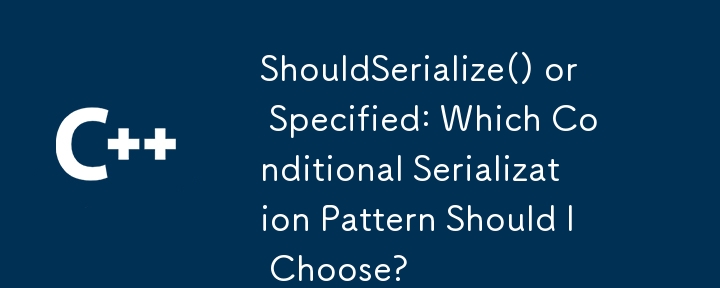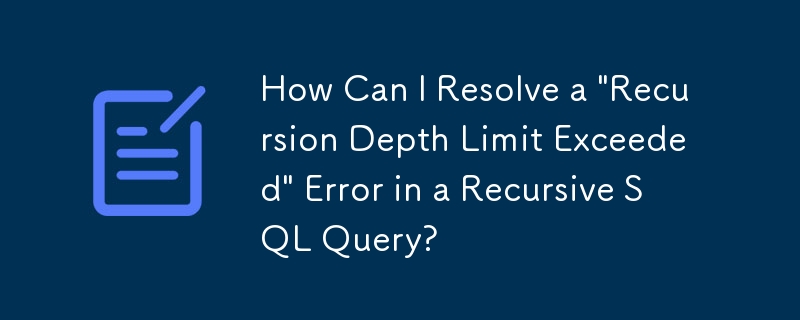Found a total of 10000 related content

How to achieve the rotation effect of element
Article Introduction:To achieve the rotation effect of an element, use JavaScript combined with CSS3's transform attribute. 1. Use transform's rotate() function to set the rotation angle. 2. Realize dynamic rotation through requestAnimationFrame. 3. Consider reducing DOM operations or using CSS animations when optimizing performance. 4. Ensure browser compatibility and add prefixes. 5. User interactive control rotation is achieved through mouse or touch events.
2025-05-23
comment 0
649

How to customize the list style of Bootstrap?
Article Introduction:Bootstrap's list style can be customized through custom CSS classes. The basic classes include: unordered list (<ul>), ordered list (<ol>) and inline list (<ul class="list-inline">). By adding custom classes, you can modify the list style, such as removing marks, adding colors, icons, and spacing. Advanced tips include using the :nth-child() selector to implement interlaced color discoloration, and using Sass or Less preprocessors to simplify the code. When customizing, maintain style consistency and avoid over-customization.
2025-04-07
comment 0
724
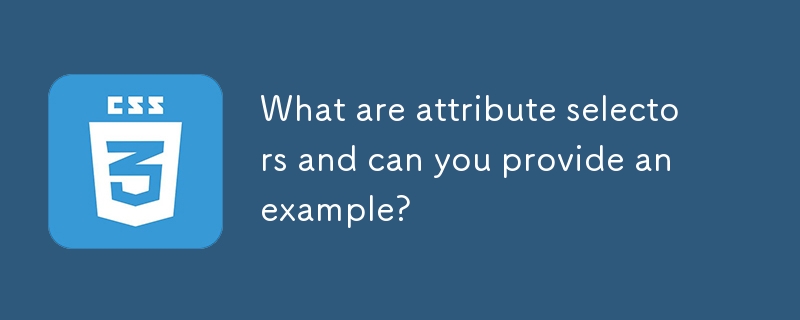
What are attribute selectors and can you provide an example?
Article Introduction:The CSS attribute selector performs precise style control through the attributes and values ??of elements, and supports multiple matching methods. Its basic syntax is element[attribute="value"], for example: [type="text"] exactly matches attribute values; [href] only judges the existence of attributes; [class~="highlight"] matches specific values ??in the space-separated class name list; [attr|=value] is used to match hyphen-separated values ??(such as language code); [attr^=value], [attr$=value] and [attr*=value] respectively
2025-07-03
comment 0
377

Vue Animation and Transition Effects
Article Introduction:In web development, Vue provides a simple and powerful animation system to achieve transition effects. 1. Use wrapping a single element to implement basic animation, define the animation name through the name attribute, and achieve the fade effect with the corresponding CSS class, where v-if control display is the key. 2. Using the combined key attribute, you can add animations to multiple elements, such as the transition effect when the list is added or deleted, and you can set animation styles through CSS. 3. Combining CSS animation libraries such as Animate.css can quickly achieve more complex animation effects. Just specify enter-active-class and leave-active-class in it to complete the integration. After mastering these methods, developers can
2025-07-10
comment 0
608

How to style an element in a dropdown?
Article Introduction:The best way to precisely control the style of drop-down menu elements is to use custom components. 1. Create a container div that contains a drop-down trigger and an option list, and completely control its appearance through CSS; 2. The option style of the native select element is limited and only valid in some browsers; 3. Specific styles can be applied to the target item through the attribute selector, but the cross-browser compatibility is poor. Therefore, when highly customized designs are required, it is recommended to prioritize customization solutions for a more consistent user experience.
2025-07-11
comment 0
996
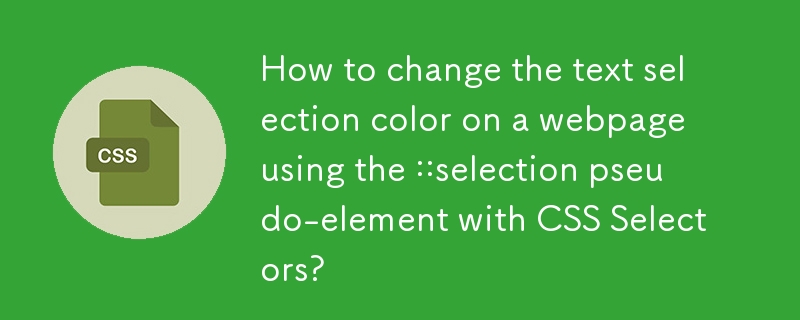
How to change the text selection color on a webpage using the ::selection pseudo-element with CSS Selectors?
Article Introduction:Want to customize the style of text selected by users on the web page? It can be implemented through the ::selection pseudo-element of CSS. ::selection allows setting some properties such as background color, font color, etc. of selected text, but does not support borders or gradient backgrounds. When using it, you can directly apply to specific tags or classes, such as p::selection or .highlight::selection. To ensure compatibility, it is recommended to add the -webkit- prefix to adapt to more devices. In addition, different selectors can be used to set different selection effects for various elements to improve the overall aesthetics of the page and user experience.
2025-07-04
comment 0
993

What is the mark tag for?
Article Introduction:The main purpose of mark tags in HTML is to highlight relevant or important text in a document. 1. The most common purpose is to highlight matching keywords in the search result page to help users quickly locate content; 2. It can also be used to emphasize key information in the context, such as definitions, warnings or repeated topics; 3. You can customize the style through CSS and display it in a yellow background by default; 4. When using it, you should pay attention to avoid relying on colors to convey meaning, not overuse, and not affecting screen readers and other auxiliary tools; 5. It is not used for purely decorative purposes. In other cases, more suitable tags such as del, ins, strong or span should be selected.
2025-07-13
comment 0
859

What is super() in Python?
Article Introduction:super() is used in Python to call the parent class's methods, and its core role is to return a temporary superclass object to call its methods. 1. It avoids hard-coded parent class names to improve code maintainability; 2. Automatically follow the method parsing order (MRO) in multiple inheritance to ensure that all initialization methods are called correctly once; 3. It is often used to extend rather than completely replace parent class behavior, such as preserving the original logic through super().append() when customizing list classes; 4. Best practices include always calling super(), maintaining call consistency, and note that super() can be used without passing parameters in Python 3.
2025-07-12
comment 0
718

What is the difference between unordered lists () and ordered lists ()?
Article Introduction:Answer to the question: None. This article mainly explains the differences and usage scenarios between unordered lists () and ordered lists () in HTML, and does not raise specific questions. 1. Unordered lists are used for items that are not related to order, usually marked with dots; 2. Applicable to shopping lists, product functions, etc. without ordering; 3. Custom styles can be customized through CSS. 4. Ordered lists are used for items with important order, usually marked with numbers or letters; 5. Applicable to operation steps, game rules, etc. where order is required; 6. The numbering format can be customized through the type attribute, such as Roman numerals or letters. When selecting, you should decide which list to use based on whether the order of the item is important.
2025-06-27
comment 0
1051

How do I use the class attribute to apply CSS styles to elements?
Article Introduction:To apply CSS styles using classes in HTML, first assign one or more class names to the element through the class attribute, and then define the styles of these classes in CSS. For example: You can use .highlight{background-color:yellow;} to achieve highlighting effect; if multiple classes are needed, you can write it as and define the .box and .warning styles respectively. Classes are suitable for multiplexing styles across elements, creating style variants, and building reusable components. They are more flexible and controllable than ID selectors (unique) and element selectors (specific tags only). When naming classes, they should be concise and clear, avoid being too general, and BEM and other specifications can be used to improve maintainability. Browser efficiently handles class reuse without worrying about sex
2025-06-22
comment 0
677
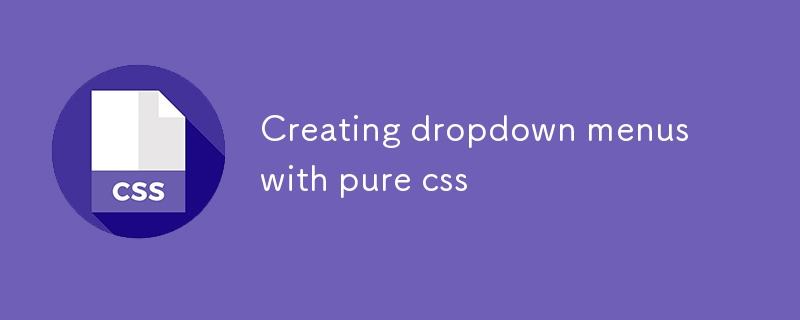
Creating dropdown menus with pure css
Article Introduction:The key to making a pure CSS drop-down menu is that it has clear structure, natural interaction, and no JavaScript is required. 1. Use unordered lists and list items to build a semantic HTML structure. Place the main menu item under .menu, and the submenu is implemented with nesting; 2. Display hidden through CSS's :hover pseudo-class and positioning control. Use display:none; hide submenu by default. Use display:block; to display when hovering, and set position:absolute; to coordinate with parent element position:relative; to coordinate positioning; 3. Optimize the experience and add transition animations, such as opacity and visibility combined with transition implementation.
2025-07-09
comment 0
726


Dave The Diver: How To Catch Spider Crabs
Article Introduction:In Dave The Diver, there are some creatures that are not easy to catch. Or, catch alive that is. The spider crab is one of those very species, making it seem like the only way to bring these crustaceans back up to land is to viciously crack them up w
2025-01-10
comment 0
808
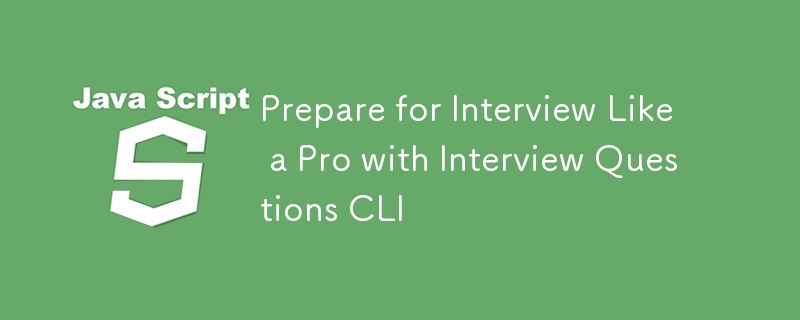
Prepare for Interview Like a Pro with Interview Questions CLI
Article Introduction:Prepare for Interview Like a Pro with Interview Questions CLI
What is the Interview Questions CLI?
The Interview Questions CLI is a command-line tool designed for JavaScript learners and developers who want to enhance their interview
2025-01-10
comment 0
1437

Soft Deletes in Databases: To Use or Not to Use?
Article Introduction:Soft Deletes: A Question of DesignThe topic of soft deletes, a mechanism that "flags" records as deleted instead of physically removing them, has...
2025-01-10
comment 0
1051
















